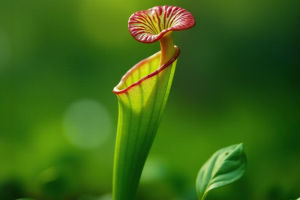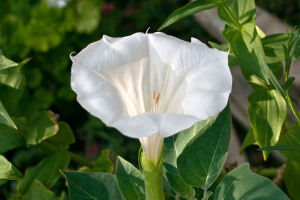Do Plants Really Clean Air?
You've seen the claims. "This plant purifies your air." "Add a peace lily to fight toxins." Maybe you even bought a snake plant for your bedroom, hoping to breathe easier.
But how much of this is based on real science—and how much is just green marketing?
Let's dig into what researchers—including NASA—actually found about indoor plants and air quality. The answer might surprise you.
The NASA Study: Where It All Began
A 1989 study kicked off the idea, but it came with important limitations.
NASA's original research on houseplants and air purification is often cited as proof that indoor plants clean the air. The study showed that certain plants could remove volatile organic compounds (VOCs) like formaldehyde, benzene, and trichloroethylene from sealed environments.
But here's the key: those experiments were done in airtight chambers the size of a microwave, not real homes. The plants were surrounded by high concentrations of pollutants, and the air wasn't circulating like it does in a normal room. In other words, the conditions were far from realistic.
What Happens in Real Homes?
Plants do filter air—but not nearly fast enough to matter at home scale.
In 2019, researchers from Drexel University reviewed dozens of studies on this topic. Their conclusion? You'd need 10 to 1,000 plants per square meter to match the effectiveness of a modern mechanical air purifier.
Let that sink in. To actually make a dent in indoor air pollution, you'd have to turn your living room into a literal jungle.
So while plants can technically remove VOCs, they do so very slowly—too slowly to have meaningful impact in typical indoor settings.
What Plants *Can* Do Well
They improve humidity, reduce stress, and support mental health.
While their role as air purifiers is often overstated, plants still offer solid benefits:
1. Humidity Regulation
Through transpiration, plants release moisture into the air, which can help in dry environments. This can be particularly helpful during winter months when heating systems dry out indoor air.
2. Psychological Boost
Studies from the University of Exeter and others have shown that greenery can boost mood, reduce stress, and even improve productivity.
3. Microbial Balance
Some indoor plants can host beneficial microbes in their soil that contribute to healthier indoor microbiomes—though this research is still emerging.
So while your pothos won't vacuum up toxins, it might help you feel calmer, more focused, and less dried out.
Common Indoor Air Pollutants—and What Actually Works
Plants alone won't fix indoor air, but other strategies can help.
Here are some common indoor pollutants and real ways to address them:
1. Formaldehyde – Found in furniture, flooring, and cleaning supplies.
Best solution: Improve ventilation, use low-VOC products.
2. Nitrogen Dioxide & Particulate Matter – From gas stoves or outdoor pollution.
Best solution: Use range hoods, air purifiers with HEPA filters.
3. Mold Spores & Dust – Common in humid or poorly ventilated spaces.
Best solution: Dehumidifiers, air purifiers, regular cleaning.
Experts like Dr. Michael Waring, an indoor air quality researcher at Drexel, point out that mechanical solutions (like HVAC filters and purifiers) are far more effective than any number of leafy greens.
If You Still Want Plants, Choose Wisely
Some plants are easier to care for and thrive indoors.
If you're adding plants to your home, aim for ones that are both low-maintenance and known to be hardy indoors. Some popular picks:
1. Snake Plant (Sansevieria) – Tolerates low light and drought; great for beginners.
2. Peace Lily (Spathiphyllum) – Can help raise humidity, but toxic to pets.
3. Spider Plant (Chlorophytum comosum) – Resilient and fast-growing.
4. Areca Palm – Good for humidifying the air in larger rooms.
These won't scrub your air, but they may make your space feel more comfortable and psychologically uplifting.
You don't need to give up on houseplants. They're beautiful, calming, and, yes, have a few minor physical benefits indoors. Just don't expect them to function as a substitute for air purifiers or proper ventilation.
So, that fern on your shelf? Keep it. Just maybe pair it with a HEPA filter if you're serious about improving your indoor air quality.
Have you noticed any change in how your space feels with plants around? Let's talk about what's helped you feel clearer and healthier indoors.
-
 Insect Plant PartnershipsInsects and plants do more than just pollination! Discover their surprising partnerships that shape our natural world.
Insect Plant PartnershipsInsects and plants do more than just pollination! Discover their surprising partnerships that shape our natural world. -
 The Ancient WonderMeet the Welwitschia mirabilis: a plant that lives for millennia with only two extraordinary leaves!
The Ancient WonderMeet the Welwitschia mirabilis: a plant that lives for millennia with only two extraordinary leaves! -
 Moonlit BloomWhen the Moonflower Awakens: A Fragrant Dance in the Dark
Moonlit BloomWhen the Moonflower Awakens: A Fragrant Dance in the Dark
Copyright © zogu 2021 - 2025. All Right Reserved.